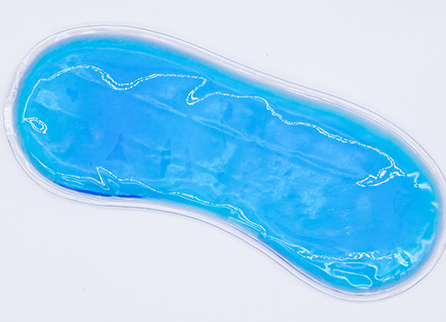Eye compresses are therapeutic tools designed to provide warmth or cooling to the eyes. They offer relief from various eye conditions such as dryness, inflammation, redness, and eyelid discomfort. Additionally, they can aid in managing symptoms associated with conditions like blepharitis, meibomian gland dysfunction, and dry eye syndrome.
But how do you know whether to use hot or cold compresses? Should you buy your compresses or make your own? Which are better, moist compresses or dry compresses? This blog will address all these questions and more.
The healing effects of temperature
Whether used for your eyes, your knees, or your back, temperature-regulating compresses work the same way:
- Warm or hot compresses increase blood flow and open pores.
- Cool or cold compresses decrease blood flow and inflammation.
When would you want increased blood flow or open pores? Let’s take a closer look at warm compresses.
Warm compresses
Warm compresses apply gentle heat to the eyes, which helps to improve circulation, soothe irritated eyelids, and facilitate the release of natural oils from the meibomian glands. They are beneficial in treating dry eye, styes, and blepharitis.
- Dry eye: Warm compresses open your meibomian glands and thin the meibomian oil within the glands, allowing for thicker, healthier tears that do not evaporate quickly. Do you remember that kid who always used to win staring contests in grade school? They probably had very healthy meibomian glands to help minimize tear evaporation and provide long-lasting relief between blinks. Warm compresses work best for dry eyes if used consistently, at least once daily.
- Styes: A stye occurs when one or more of your meibomian glands becomes inflamed. A stye is a focal, granulomatous inflammation of the eyelid gland and generally DOES NOT represent an infection. Warm compresses and gentle massage can help widen the opening to the gland so that the inflammatory gunk can drain and your stye can shrink away.
- Blepharitis: Blepharitis is eyelid inflammation and often involves crust-like inflammatory debris that collects in your eyelashes. Warm compresses can help loosen the crust and temporarily relieve pain or burning.
Cold Compresses
Cold compresses can be used on the eye like any other body part – to reduce redness, swelling, itching, or pain. They are most helpful in the following scenarios:

- Eye allergies: Cold compresses decrease blood flow to the eyes, minimizing swelling, redness, itching, and pain accompanying eye allergies. Read our recent blog to learn all about the top ten ways to treat eye allergies!
- Dark circles: Dark circles under the eyes represent increased blood flow and swelling. Cold compresses can provide temporary improvement by decreasing blood flow.
- Minor injuries: Cold compresses can hasten the healing of minor bumps, scrapes, or cuts on the eyelids. For more severe injuries – those associated with significant bleeding, pain, or vision loss – please see an ophthalmologist or urgent care provider for definitive treatment!
- Healing from surgery: Cold temperatures can relieve pain and swelling after surgery on the eyes or eyelids. I always recommend ice packs for patients healing from PRK surgery. However, I DO NOT recommend cold compresses for the first two weeks after LASIK, as I do not want patients to disrupt the healing of their LASIK flaps. To be safe, always ask your surgeon before applying pressure to your surgical site.
How to use warm and cold compresses

The best warm compress is a DRY warm compress. Wet compresses lose heat too quickly, while dry compresses hold heat for extended effectivity. Furthermore, the wetting-drying cycle of a moist compress can damage your eyelid skin and lead to dermatitis.
You can buy warm compresses in the eye care aisle of your favorite physical or online distributor. Follow the instructions for proper use, which may require microwaving or electricity.
It is also easy to make your own warm compress! Take a clean sock and fill it with uncooked (dry) rice. Microwave the sock until it is slightly hot but not too hot to be intolerable. Then, apply it to your closed eye(s) for 10–15-minute intervals, reheating it if necessary.
You can also either purchase or make your own cold compress. Manufactured cold compresses generally contain gel beads within an eye mask and can be placed in the freezer for optimal cooling. Alternatively, you can cover a malleable ice pack with a soft, clean towel and place it directly over your closed eyes for 10–15-minute intervals, re-freezing if necessary.
Cucumbers and tea bags
Patients use myriad herbal remedies to augment eyelid and ocular health, from cucumber facials to tea bags and beyond. Research is limited on the effectiveness of these individual remedies, so please use them with caution. But temperature alone is a powerful moderator of blood flow and health. Use the soothing power of cold and the healing power of warmth to treat your eyes to beauty and comfort this year.
Thanks for reading!
Jonathan Corsini, MD


